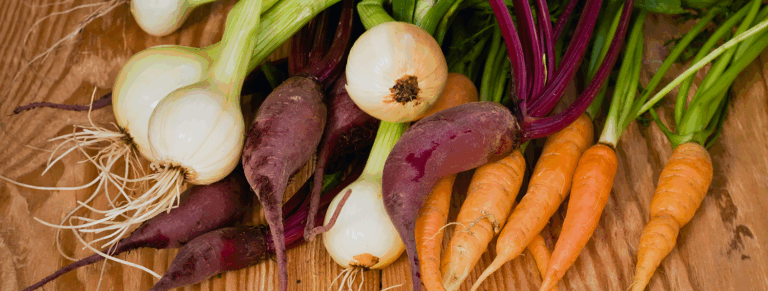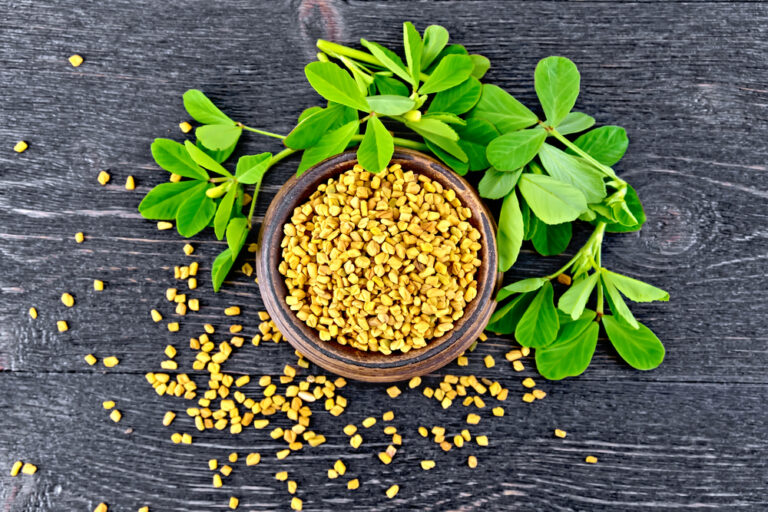How Do Lifestyle Factors Influence GI Health?
How Do Lifestyle Factors Influence GI Health?
On a mission to help the human body obtain the nutrition it needs to survive and thrive, the gastrointestinal (GI) tract of the digestive system is regularly exposed to food particles, environmental toxicants, and potential pathogens. Maintaining a strong and healthy digestive system is key for promoting nutrient absorption, fostering a robust and diverse microbiome, and supporting general wellbeing and GI health.
Humans are not always able to set their digestive systems up for success. In 2010, digestive conditions resulted in 48.3 million visits to office-based health care providers, hospital outpatient clinics, and emergency departments across the United States.1-2 A large majority of these patients had digestive conditions as the primary diagnosis during their visit.1
Diet and GI Health
The types of foods people eat have a large impact on inflammatory status in the GI tract.3 For example, phytonutrients from plant-based foods and omega-3 fatty acids in the diet are linked to healthy inflammatory response in the GI tract.3 Phytonutrients from plants also support digestive health through modifying microbial populations in the microbiome and promoting intestinal barrier integrity.4-5
Foods high in fiber are also important for a healthy GI tract. This is because bacteria that live in the GI tract break down fiber through fermentation, increasing production of short chain fatty acids (SCFAs), like butyrate.7 Butryate is associated with healthy effects in the body such as protecting the blood brain barrier, supporting intestinal health, and protection against antibiotic exposure.7-8
Fiber can be either water insoluble and less fermented or water soluble and more fermented.9 Common sources of fiber include:
- Vegetables
- Legumes and seeds
- Fruits
- Whole grains
Diets with higher amounts of fiber from plants contribute to richly diverse microbiomes and increased levels of SFCA production in the intestine.10-11 Increasing fiber consumption also supports intestinal health by adding bulk and relieving constipation.
Stress and GI Health
Increased stress can lead to excess production of the stress hormone cortisol, which in turn can negatively affect the digestive system. This is because the “fight or flight” response to stress, quantified by changing cortisol levels, prioritizes blood flow to the heart and brain, temporarily sacrificing less vital organs like those in the digestive system. Historically, this diversion was necessary in a state of emergency when the cortisol spike was warranted. Many modern-day humans, though, experience chronic activation of the “fight or flight” response as a result of boosted cortisol levels from everyday stress. Thus, these same humans constantly experience the detrimental digestive effects of “fight or flight,” even when there is no emergency driving the response.12 These stressful instances have shown an ability to negatively influence the microbial populations in the lower GI.13
The Microbiome and GI Health
The health of the gut microbiome is a foundational part of digestive health. The microbiome is the massive population of microorganisms that live in the human body, like bacteria. Scientific evidence makes significant connections between microbiome diversity, diet, physiological effects – good and bad.14 For example, poor microbiome health is linked to increased levels of inflammatory cytokines.15
The human microbiome begins to develop in infancy. After birth and during early maturation, exposure to new energy sources from food and the external environment shapes the content of the microbiome until a young child’s microbiome reaches “adult status.”16 Many factors may affect the content and diversity of the human microbiome: antibiotic use, prolonged prescription drug use, dietary changes, gastrointestinal illness, development of chronic conditions, moving to a new country, short term travel, and even the stressful holiday season.17-24
Antibiotics & GI Health
Antibiotics can be detrimental to GI health by negatively influencing the growth of helpful microbiota, lowering biodiversity and disrupting the production of metabolic byproducts from phytonutrients, compromising intestinal barrier integrity (possibly leading to leaky gut), and favoring the growth of opportunistic pathogens. Antibiotic-related GI damage can be especially common in the elderly, as they are one of the most commonly prescribed medications for this age group.29 Additional prescription medications, such as proton pump inhibitors and antipsychotics result in lower diversity of the microbiome.25
GI Dysbiosis
GI dysbiosis can occur when the balance of the intestinal environment becomes disrupted by stress, poor diet, limited physical activity, or antibiotic overuse or misuse. This can be microbial population dependent where a person is out of the normal range of bacteria proportions (too many of some microbes and/or to little beneficial microbes).25 Whether because of genetics, early colonization, lifestyle, or other factors, GI dysbiosis is associated with a myriad of health conditions such as:
- Mood disorders (anxiety and depression)
- Leaky gut: a condition characterized by weakened junctions between epithelial cells
- Nutrient deficiencies8
Phytonutrients and the Microbiome
For the most part, phytonutrients from plant foods circumvent chemical breakdown in the gut until they reach the lower GI tract, giving them the opportunity to interact with the microbiota living there. Bacteria then break down these phytonutrients into metabolites small enough to then be absorbed through enterocytes and travel through the circulation.
Specific phytonutrients are uniquely able to support microbiota growth, which is associated with beneficial effects, like improving intestinal barrier integrity.5-6 Phytonutrients can also impact microbial diversity in the GI tract by both enhancing and reducing bacterial populations.27 Microbial populations that benefit from phytonutrient support include:28
- Lactobacilli
- Bifidobacteria
- Akkermansia muciniphilia
- Facalibacterium prausnitzii
- DiRienzo, D.B. (2014). Effect of probiotics on biomarkers of cardiovascular disease: implications for heart-healthy diets. Nutrition Reviews, 72(1), 18-29.
- National Institute of Diabetes and Digestive and Kidney Diseases. (2014, November 01). Digestive diseases statistics for the United States. Retrieved from https://www.niddk.nih.gov/health-information/health-statistics/digestive-diseases
- Myles, I.A. (2014). Fast food fever: reviewing the impacts of the Western diet on immunity. Nutrition Journal, 13(1), 61.
- Due, et al. (2015). A Survey of Modulation of Gut Microbiota by Dietary Polyphenols. BioMed Research International, 2015, 15.
- Oteiza, P.I., et al. (2018). Flavonoids and the gastrointestinal tract: Local and systemic effects. Mol Aspects Med, 61, 41-49.
- Suzuki, T. & Hara, H. (2011). Role of flavonoids in intestinal tight junction regulation. J Nutr Biochem, 22(5), 01-8.
- Saez-Gonzalez, E., et al. (2019). Bases for the adequate development of nutritional recommendations for patients with inflammatory bowel disease. Nutrients, 11(5).
- Smith, P.A. (2015). The tantalizing links between gut microbes and the brain. Nature, 526(7573), 312-4.
- Dhingra, D., et al. (2012). Dietary fibre in foods: a review. Journal of food science and technology, 49(3), 255-266.
- De Filippo, C., et al. (2010). Impact of diet in shaping gut microbiota revealed by a comparative study in children from Europe and rural Africa. Proceedings of the National Academy of Sciences of the United States of America, 107(33), 14691-14696.
- Claesson, M.J. et al. (2012). Gut microbiota composition correlates with diet and health in the elderly. Nature, 488(7410), 178-84.
- Yue, S.-J., et al. (2019). Berberine alleviates insulin resistance by reducing peripheral branched-chain amino acids. American Journal of Physiology-Endocrinology and Metabolism, 316(1), E73-E85.
- Bharwani, A. et al. (2016). Structural & functional consequences of chronic psychosocial stress on the microbiome & host. Psychoneuroendocrinology, 63: 217-27.
- Dong, T.S. & Gupta, A. (2019). Influence of early life, diet, and the environment on the microbiome. Clin Gastroenterol Hepatol, 17(2), 231-242.
- Grenham, S., et al. (2011). Brain-gut-microbe communication in health and disease. Front Physiol, 2, 94.
- Lozupone, C.A., et al. (2012). Diversity, stability and resilience of the human gut microbiota. Nature, 489(7415), 220.
- Vangay, P., et al. (2018). US immigration westernizes the human gut microbiome. Cell, 175(4): p. 962-972.e10.
- Jackson, M.A., et al. (2018). Gut microbiota associations with common diseases and prescription medications in a population-based cohort. Nature communications, 9(1), 2655-2655.
- Kim, S., Covington, A., & Pamer, E.G. (2017). The intestinal microbiota: Antibiotics, colonization resistance, and enteric pathogens. Immunological reviews, 279(1) 90-105.
- Francino, M. (2016). Antibiotics and the human gut microbiome: dysbioses and accumulation of resistances. Frontiers in microbiology, 6, 1543.
- Graf, D. et al. (2015). Contribution of diet to the composition of the human gut microbiota. Microbial ecology in health and disease, 26(1): 26164.
- Rasko, D.A. (2017). Changes in microbiome during and after travellers’ diarrhea: what we know and what we do not. Journal of travel medicine, 24(suppl_1): S52-S56.
- Youmans, B.P., et al. (2015). Characterization of the human gut microbiome during travelers’ diarrhea. Gut Microbes, 6(2), 110-119.
- de Clercq, N.C., et al. (2019). The effect of having Christmas dinner with in-laws on gut microbiota composition. Human Microbiome Journal, 13, 100058.
- Le Bastard, Q., et al. (2018). Systematic review: human gut dysbiosis induced by non-antibiotic prescription medications. Alimentary Pharmacology & Therapeutics, 47(3), 332-345.
- King, C.H., et al. (2019). Baseline human gut microbiota profile in healthy people and standard reporting template. PLOS ONE, 14(9), e0206484.
- Duenas, M., et al. (2015). A survey of modulation of gut microbiota by dietary polyphenols. Biomed Res Int, 2015, 850902.
- Espín, J.C., González-Sarrías, C.,, & Tomás-Barberán, F.A. (2017). The gut microbiota: A key factor in the therapeutic effects of (poly)phenols. Biochemical Pharmacology, 139, 82-93.
- (2020, June 11). Core elements of antibiotic stewardship for nursing homes. Retrieved from https://www.cdc.gov/longtermcare/prevention/antibiotic-stewardship.html







